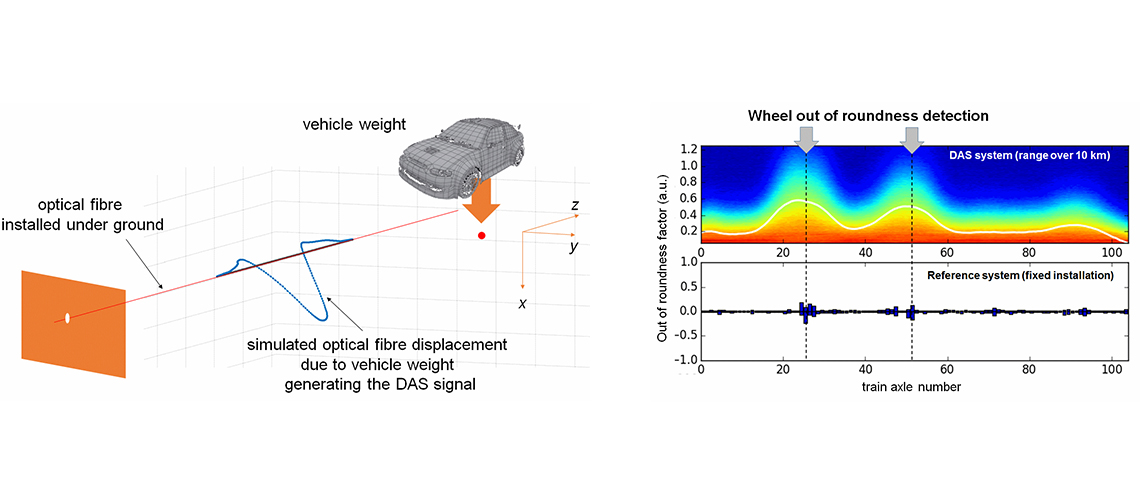Infografic car tire unevenness
Fibre optic cables can be used as distributed acoustic sensors: light pulses inserted from one end are reflected if sound or pressure waves impinge on the cable at some point. By applying an interferometer, distance and time-dependent intensity information can be derived. In this way features can be computed and conclusions about the event drawn automatically in real time. This technology enables surveillance of wide-ranging zones, such as railway tracks or highways, over a range of up to forty kilometres using an interrogator. Where such systems are currently in place – for the remote surveillance of oil pipelines, for example – signal processing for event analysis remains a challenge.
Surveillance of railroads
In cooperation with ÖBB Infrastruktur AG and Fibre Cable Technology GmbH, a sensor system for measuring vehicle profiles, detecting flat spots on wheels and detecting persons walking on the railroad embankment was developed and tested on the ÖBB railroad infrastructure. As an example, flat spots could be clearly detected by their characteristic sound.
Such a system will also be capable of tasks such as tracking trains, monitoring train integrity, and detecting unauthorized activities on the railroad embankment. The AIT software has been successfully tested in the above applications and is available for further pilot projects and developments.
Surveillance of highways
Although the physical impact of a car on the ground is less intense than that of a train, vehicles can still be detected and tracked. As practical testing on many different road surfaces and geometries is a complex and costly task, AIT has developed a simulation model for vehicle/ground impact. An evaluation comparing DAS-measured and simulated results demonstrated the full applicability of the simulation model. The AIT simulation model is now available for designing highway monitoring systems.
Surveillance of highways using DAS enables seamless and automatic detection of any abnormalities in traffic flow in real time. This would be an effective and efficient method for early warnings and alarms in future road networks.




